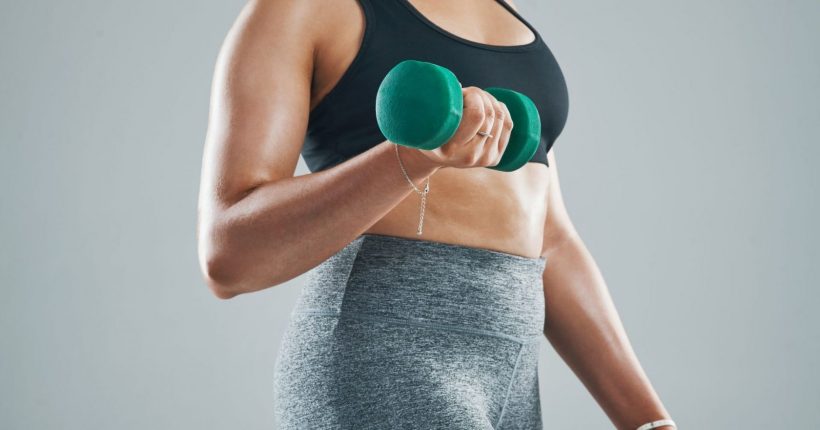Good gut health and regular exercise are completely interlinked.
If good gut health is on the agenda for 2022, you’ve probably stocked up on kombucha, beans or kimchi. But don’t overlook the benefit of moving more on your gut microbiome. Yep, exercise has been proven to cause changes in your gut “towards a healthier microbiome with benefit to human health in general,” according to a new study.
The paper, from the Journal of the International Society of Sports Nutrition in December 2021, isn’t the first study to find that exercise has the potential to improve our gut health. In fact, it’s a growing body of research that shows the beneficial impact of moving on your digestive system.
You may also like
Is your poor gut health stopping you from getting stronger?
Of course, it’s not news that exercise helps your stomach. Gentle yoga has often been seen as a good cure for constipation, particularly poses such as pavanamuktasana (knees to chest), which literally translates to wind relieving pose thanks to the ‘massage’ it gives the colon and surrounding tissue.
“Other forms of exercise are also known to help with gut issues, such as improving constipation in the short term,” notes Evelyn Toner, sports nutritionist at the Gut Health Clinic. “Alternatively, endurance exercise has been shown to lead to gut discomfort – reducing blood flow to the area. Prolonged exercise may result in an increase in gut permeability and the occurrence of exercise-induced gut symptoms such as bloating, discomfort, nausea and diarrhoea.”
You may also like
Can exercise help with IBS? Yes, explains a gastroenterologist
That’s why marathon runners often end up with a dodgy tummy – but unless you’re frequently undertaking endurance-based sport, that shouldn’t be a concern (and if you are, talk to a sports-specific expert who can support you). Most crucially, “exercise has longer-term benefits on the gut, such as improving the gut microbiome diversity, reducing the risk of colon cancer, diverticulosis and inflammatory bowel disease,” says Toner.
In the 2021 study, researchers found that a nine-week high-intensity indoor cycling training programme led to improvements in gut health. Most notable was an increase in the Firmicutes – a bacteria known to produce butyrate, a molecule known for its role in regulating energy metabolism and increasing insulin sensitivity – and actinobacteria, an anti-inflammatory bacteria. Researchers also noticed a decrease in proteobacteria and cyanobacteria, strains of bacteria associated with pro-inflammation.

The findings are similar to that of previous studies. For example, a 2017 review of the literature by researchers at the University of Naples found that “the available data strongly support that, in addition to other well-known internal and external factors, exercise appears to be an environmental factor that can determine changes in the qualitative and quantitative gut microbial composition with possible benefits for the host.”
The exact reason how exercise makes these changes to our gut are unknown. The researchers of the 2021 paper noted that “exercise, particularly high-intensity exercise, might promote a spontaneous change of dietary choices toward a healthier direction” and as a result “some changes in the gut microbiota may be due to differences in dietary intake, in addition to the exercise itself”. However, other studies have found changes in the microbiome after exercise even without dietary changes.
You may also like
How to change your diet when you start exercising according to a nutritionist
And another benefit to prioritising your stomach is that the relationship works both ways: better gut health has been shown to improve training, particularly VO2max. And in a 2016 paper published in the journal Nutrients, researchers found that six weeks of supplementation with probiotics increased muscle mass and grip strength and enhanced energy harvesting and exercise performance. Researchers said it might be down to the strains of bacteria producing lactic acid, “which in turn could be used by lactate-utilising bacteria to produce butyrate.”
If you’re sold on the benefits of moving more to support your gut, then know that there’s no best type of exercise, says Toner. And keep in mind that regular endurance training could actually lead to greater gut complaints, but generally, “a combination of cardio and strength exercise would be optimal for health, and as the benefits come from long-term exercise the key thing is to find something you enjoy and can stick with consistently,” she adds.
Images: Getty
Source: Read Full Article
